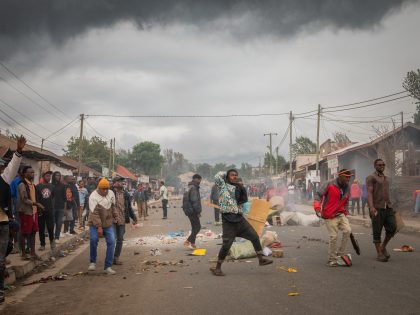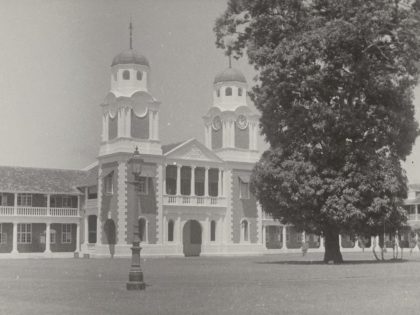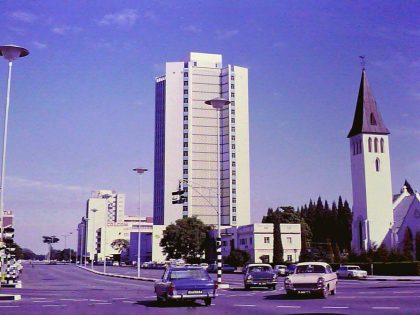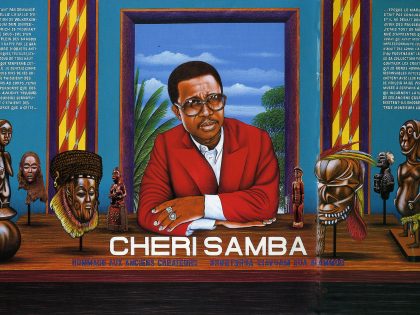The limits of France’s racial memory
The French narrative of the Enlightenment still struggles to contend with the country’s racialized hierarchy in its cultural artifacts.
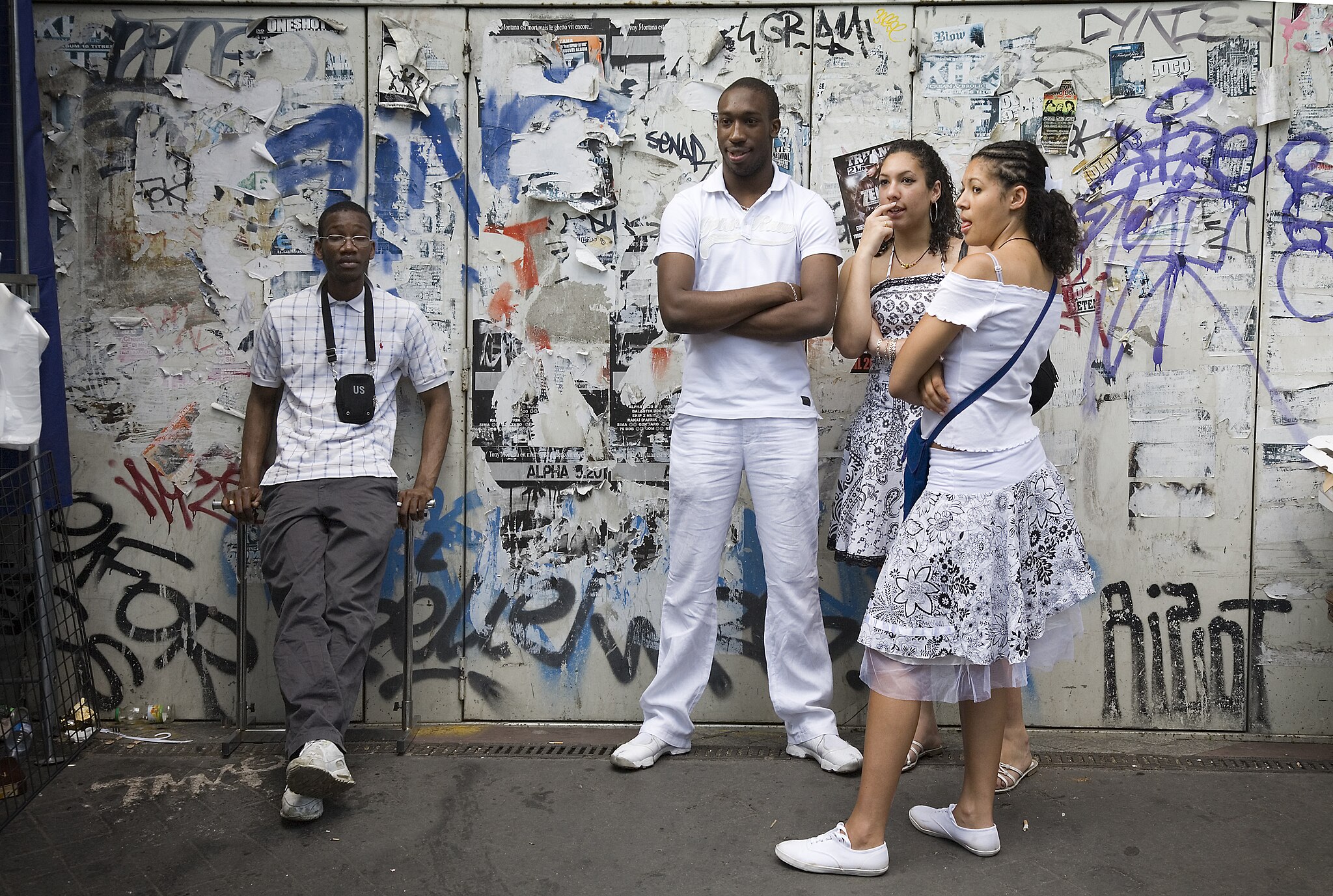
Young Parisians in Marche Dauphine. Image credit Jorge Royan via Wikimedia Commons CC BY-SA 3.0.
In France, the word noir can feel like a provocation. Meant to describe Blackness in polite terms, it is more typically whispered in hushed tones with blushing cheeks—or altogether replaced with the English term black delivered in a heavy French accent, as if the foreign word might soften its political charge. Race is something to be hinted at, not spoken out loud. And yet, when it was announced in 2020 that Agatha Christie’s classic mystery Les Dix Petits Nègres would finally be retitled Ils étaient dix (“They were ten”), the backlash was swift and loud. Suddenly, nègre—France’s equivalent to the n-word—became a hill to die on. Newspapers decried censorship, commentators bemoaned the loss of literary tradition, readers raged against the virus of political correctness. France, where race is supposedly invisible, had no problem defending a racial slur in the name of art. The event revealed a telling contradiction: Noir is too political to say, but nègre is too cultural to erase. In a country that prides itself on being colorblind, Blackness is somehow both hyper-visible and illegible.
Noir has long been treated with heavy discomfort in France, seen as a word with racist connotations by white French individuals, imbued with relics of a colonial past that France would prefer to forget. France has therefore kept its Black history under wraps, claiming a universal history to be claimed by its Black population that sidelines racially charged events. Under the guise of unconditional belonging, France’s Black diaspora has been absorbed and invisibilized within the broader French identity. French history is Black history. And yet, for all of its inclusivity and benevolent blindness to difference, Black history has never been at the forefront of French history. Events critical to France’s African diasporic subjects such as the Haitian Revolution are relegated to the status of minor historical moments. Antillean history and figures, such as Toussaint L’Ouverture, the Nardal sisters or Frantz Fanon, remain forever overshadowed by Napoléon, Voltaire, and Victor Hugo. In Paris, Blackness is curated rather than confronted.
Recent events suggest that the tide is perhaps finally shifting, moving Blackness from a largely invisible conversation that is relegated to the margins to center stage. This spring, the Centre Pompidou debuted the first exhibition solely dedicated to Black artists in Paris—“Paris Noir: Circulations artistiques et luttes anticoloniales, 1950-2000.” And on the 100th anniversary of his birth, a biopic on the life of anticolonial scholar Frantz Fanon premiered in France, finally bringing his work to the limelight.
The opening of this collection and movie brought with it hope that France was finally ready to start seeing and speaking race—instead of being relegated to a cumbersome word to be spoken through uncomfortable giggles, Noir now features in the title of a major museum exhibition.
On an unassuming white wall, the exhibition begins with a description of the project. The dozen people swarming the wall are a hint of the bustling crowd of visitors populating the entirety of the space. Pushing my way to the front, key terms like “Black condition,” “Black consciousness,” “Négritude,” “slavery and colonization,” “Black Atlantic,” “civil rights,” “equality,” look back at me. On the opposite wall, a timeline of the Black condition in France and abroad between 1944 and 1999 written in red, green, and yellow to hammer in the exhibition’s African diasporic scope. Africa is ever-present, the colors seem to say.
Occupying nearly an entire floor, Paris Noir is overwhelming, crammed with seemingly every piece of art created by a Black person who lived in or visited Paris between 1944 and 2000 that the Pompidou’s curatorial team could find. The goal of the exhibition was to meditate on what the experience of Blackness in Paris brought to art, however, the message is muffled.The exhibition features thirteen sections with hordes of visitors strolling through them. 150 Black artists with different mediums, inspirations, and backgrounds are featured, creating a cacophony of stories that make tracking a cohesive story of race in France an impossibility in a single run through of the exhibition. Over the course of three hours, I and hundreds of others shuffle along from painting to painting; jumping from whichever painting has the least viewers to whichever sculpture has the smallest audience feels like the surest strategy to preserve sanity.The crowd is diverse: a young artsy Black couple, a typical French bourgeois family with their elderly grandmother, a guided tour full of Americans, an enthusiastic British woman exclaiming “It’s amazing” at every painting, an Antillean family searching for artists from the Caribbean to show to their children… France’s diversity, rarely obvious in cultural spaces like museums that remain heavily segregated, is for once clearly reflected. The thematics and their wealth of material, however, do not feel coherent—rather, they read as a way for the exhibition to hit all the key words it presents in its first descriptive panel. Walking through “Pan-African Paris,” “Afro-Atlantic Surrealism,” “Back to Africa,” and “A New Black Paris Map,” Blackness remains somehow illegible.
To those with a trained eye or inexhaustible patience, the story of Paris Noir does quietly emerge. The subject matters and compositions hint at the story of resistance and anti-colonialism that the exhibition’s subtitle promises. However, on the grand scale, Blackness is present but not truly meditated upon. The title’s promise of “anti-colonial resistance” is lost to the idealistic, abstract, or apolitical artistic visions of the selected 150 Black artists. The art and artists featured all feel non-threatening to the accepted French memory of race: apart from a video of an interview of Angela Davis and a mention of James Baldwin’s 1963 march for Civil Rights in Paris, the art and creators of Paris Noir are curated to confirm French benevolence and cultural superiority. One section on the “Rites and Memories of Slavery” mentions the duty of memory and the refusal to forget this somber history. Yet, in the few pieces it presents, France’s role in slavery is barely meditated upon. Colorblind France ironically positions itself as a role model of this duty of memory, but stops short of considering its role in the trade that made Black artists feel the need to reflect on the tragedy through their work.
Focusing on the migration to Paris of Black individuals places the racist impetus on the countries the artists migrated from. It leads the audience to question what made these artists feel the need to seek out Paris? What situations abroad constrained them to the extent of migrating, sometimes across the world? Prioritizing these questions makes it easy for the Centre Pompidou to avoid reflecting on France’s own biases, an agenda furthered by the selected time frame.
The American dominance that prevails throughout the galleries is perhaps the exhibition’s clearest through-line and truest reflection of racial hierarchization in France. African Americans are, and have long been, at the top of the Black ladder, as the myth of Joséphine Baker and her Pantheonization reminds us. Chatting with fellow visitors at the exit, one jokingly told me: “It felt like an exhibition about the conquest of Paris by African Americans.” The over-representation of African Americans in Paris Noir reinforces the deeply entrenched racial hierarchy that places Black Americans at the top of the pyramid in France, an acceptable Other because of their glamourous exoticism. It also, more importantly for France’s self-image, further entrenches the story of race it has long chosen to tell: Paris as a safe haven of creativity free from segregation, welcoming to all. One piece of the puzzle remains curiously absent from the contextual brief: France’s own positionality in relation to Blackness.
Ambling through the exhibition’s 400 artworks, the silence remains, creating an uncomfortable void where France’s self-reflections could, and should, have been. The exhibition considers 1950-2000 to be a key moment in artistic circulation and anti-colonial resistance, citing the likes of the Négritude movement and Aimé Césaire, but while this range may mark the beginning of more visible independence movements, it misses both their inception and the beginning of the circulation of Black art and artists in Paris. Beginning in 1950 allows the Centre Pompidou to avoid questioning France’s uncomfortable chapters in relation to Black art. Starting at an earlier period, the Pompidou would have had to consider the 1931 Colonial Exposition, which drew millions of visitors to admire staged colonized people as ethnographic spectacles. It would also have required acknowledging the pillaging expeditions through West and Central Africa in the 1930s that filled French museums with looted artefacts, many of which remain unrestituted today. And it would have meant reckoning with the Othering and exoticization of Black performers in spaces like the Revue Nègre where Joséphine Baker’s banana skirt became a symbol of France’s colonial gaze. To start before 1950 would be to admit that Black presence in French culture did not begin with resistance, but with spectacularization and that the postwar rise of Black artistry in Paris was not simply a celebration of creativity, but a reclamation of subjecthood after generations of dehumanizing display.
Négritude and the currents of thoughts that led to it existed long before 1950, just like Paris as a haven for Black cultural expression was already well established in the interwar period. Joséphine Baker rose to fame in the mid-1920s after her début in La Revue Nègre. Louis Armstrong performed his unique, improvisational jazz in Paris in 1934. The African American colony of Montmartre, a pillar of Parisian cultural life, flourished throughout the 1920s and 1930s with artists, musicians, and writers seeking refuge from segregation. And African Americans were not the only ones meditating, curating, creating. The Martinican Nardal Sisters’ Salon, active in the late 1920s and 1930s, fostered intellectual, literary and cultural circulations, laying the groundwork for the Négritude movement. Paris Noir discusses La Revue Noire, but what of La Revue du Monde Noir, published in 1931-32 by the Clamart Salon participants? Why not include these earlier moments of Black artistic circulation?
The 1950s seem to be the moment of the hour, both in art and film, as exemplified by the controversial movie Fanon and its extremely limited distribution. Both Paris Noir and Fanon choose the decade to begin their stories, eclipsing an adequate interrogation of the decades of dominance and turmoil that shaped the times in favor of the final rush towards African independence. The result are two projects with glaring omissions in framing: while Paris Noir makes Blackness in this period visible but politically inert, Fanon is politically sharp, accusatory even, but eclipses Blackness.
Covering the psychiatrist’s time in Algeria, one thing is clear leaving the movie theater: the movie has a villain, and that villain is France. Where Paris Noir promises to cover anti-colonial resistance and the progressive decolonization of pan-African and transatlantic spaces, the movie Fanon truly does—the film criticizes France’s lengthy history of colonialism, yet conveniently stops short of reckoning with Frantz Fanon’s own Blackness in depth. Blackness in France is only elevated when it entertains or flatters, not when it indicts.
Fanon, born in Martinique, was a French subject. And yet, he remains largely unclaimed in France’s national narrative; his story lingers in the shadows of the myths of Joséphine Baker and James Baldwin that cast Paris as a liberated, artistic refuge. Fanon’s story, by contrast, dismantles that myth. It demands confrontation that France is not yet ready to face. And so, his film must be buried in the smallest screening rooms while Beauford Delaney’s vibrant yellow portrait of James Baldwin takes center stage in one of Paris Noir’s crowded galleries.
While Fanon is hailed as a leading decolonial scholar in universities across the world, he is surprisingly (or not) a little-known figure in France, and far from a household name. Victim of an apparent boycott from the major French cinema groups, the movie was only distributed in 70 cinemas across France, some of which only featured the movie once a week. A movie about one of France’s foremost decolonial figures is oddly barely accessible. Of the reviews the biopic has amassed, several describe the revolutionary psychiatrist as a “new figure” of anticolonialism; a striking reminder of the lack of visibility decolonial narratives and figures have in France.
Despite the lack of distribution and being screened in what appears to be one of the smallest of the 37 rooms of Paris’ largest movie theater, there are nearly no empty seats. The boycott seems to have been unable to stop the movie from being a success, with over 100,000 tickets recorded sold a mere week after its release in theaters. Is Fanon’s limited distribution simply symptomatic of the under-representation of Black cinema or does it tell a darker truth about France’s racial and colonial imaginary and memory?
Walking through Paris Noir’s thirteen crowded sections and seeing Fanon in one of the smallest screening rooms of Paris’ largest movie theater makes one thing clear: Despite certain Black stories being promoted and brought to light, Blackness remains largely illegible to the French imaginary and Black histories essentially refused. From the lack of distribution the movie received, it appears that France, self-proclaimed land of liberty, equality, fraternity, of Enlightenment, of Universalism, is still not ready to hear the story of a man who made it his life’s mission to deconstruct these false narratives. Fanon is not an isolated case. Several movies on various facets of colonial history have not been able to find financing or distribution. Only Black movies that bring laughter, like Jean-Pascal Zadi’s Tout Simplement Noir (Simply Black), or Qu’est-ce qu’on a fait au Bon Dieu? (Serial (Bad) Weddings), or that confirm the racialized status quo, like the 2019 movie Les Misérables, are permissible for the mainstream.
Fanon is, by French standards, an extremely subversive film. It uses the scholar’s thoughts to expose the cruel realities of living as a subject under colonization and opens the door for a conversation on lingering colonial consequences in our postcolonial societies. However, just like in Paris Noir, Blackness gets lost. Fanon is presented, rightfully so, as a voice of Algerian resistance in his biopic, but at the detriment of his Antillean identity, which is left largely unexamined. Even in a movie about a Black radical, Blackness is not centered; colonialism is, a cleverly executed sleight-of-hand that allows the film to evade contending with racialized hierarchies.
Veiled as a biopic on Fanon’s experience writing Les Damnés de la Terre (published in English as The Wretched of the Earth), the movie uses his story to retell the Algerian war from the perspective of the colonized. While a necessary topic to tackle as former colonies continue to contend with extracting from the French metropole in present day, Fanon’s Blackness is rendered secondary to his political utility despite the character experiencing racism routinely in the movie. The word “nègre” is hurled at him repeatedly, yet the interiority of the Black experience is not meditated upon. Most closely translatable to the n-word in American English despite its phonetic resonance with Negro, nègre still lingers in everyday expressions like travailler comme un nègre (“to work like an n-word) and in legacy product names like tête de nègre pastries. Even literary works, such as the original title of Agatha Christie’s Ten Little Indians bore the word without scrutiny until 2020. Recognized by some as a slur and by many as merely a relic of French linguistic heritage, nègre remains a buzzword in contemporary debates around “wokeness” and political correctness. Its uneasy persistence exemplifies France’s discomfort with reckoning with its racial history, or even with naming race directly. And that discomfort persists even in Fanon. Despite its revolutionary subject, France’s discomfort with Blackness prevails even in a cinematic ode to decolonization.
The paradox is that while Black stories are now the subjects of exhibitions and movies in France, Blackness remains illegible. Paris Noir exhibits Blackness without politics; Fanon enacts politics without Blackness. The exhibition removes the political charge from Black art, simply presenting it as art made by Black people despite the section titles hinting at struggle and resistance. Fanon foregrounds a figure deeply entrenched in decolonial politics who sought to dismantle the systems that made representation necessary in the first place, while declining to reckon with that contradiction.
Neither Paris Noir nor Fanon is about the Black condition. Both, however, are symptomatic of France’s lingering discomfort with race and simultaneous realization of their need to begin addressing it. Fanon’s limited distribution and Paris Noir’s lack of self-reflection are two faces of the same fear: coming face to face with the racial and colonial structures that still shape the country. As historian Françoise Vergès says, “those who control the narrative, control History.”Aesthetic, American, depoliticized Blackness is today welcome on the grand stage. But what would it look like for unruly, local, politically assertive Blackness to be centered? For France to take seriously not just the presence of Black bodies but the histories, demands, and critiques they carry with them?
The issue is no longer visibility for Black stories, but control. Blackness can be seen, but who defines what of it is seen and if it will ever be heard. This is not just a matter of institutional curation, but of national memory. Until France is willing to center the uncomfortable, the local, and the radical, it will continue to curate around its past rather than confront it. By burying Fanon in the smallest cinema rooms and by overwhelming viewers with hundreds of Black artists in Paris Noir, France remains the Enlightened master of its story as a liberated and liberating country– and Blackness, in all its complexity, remains on display but never quite legible.




